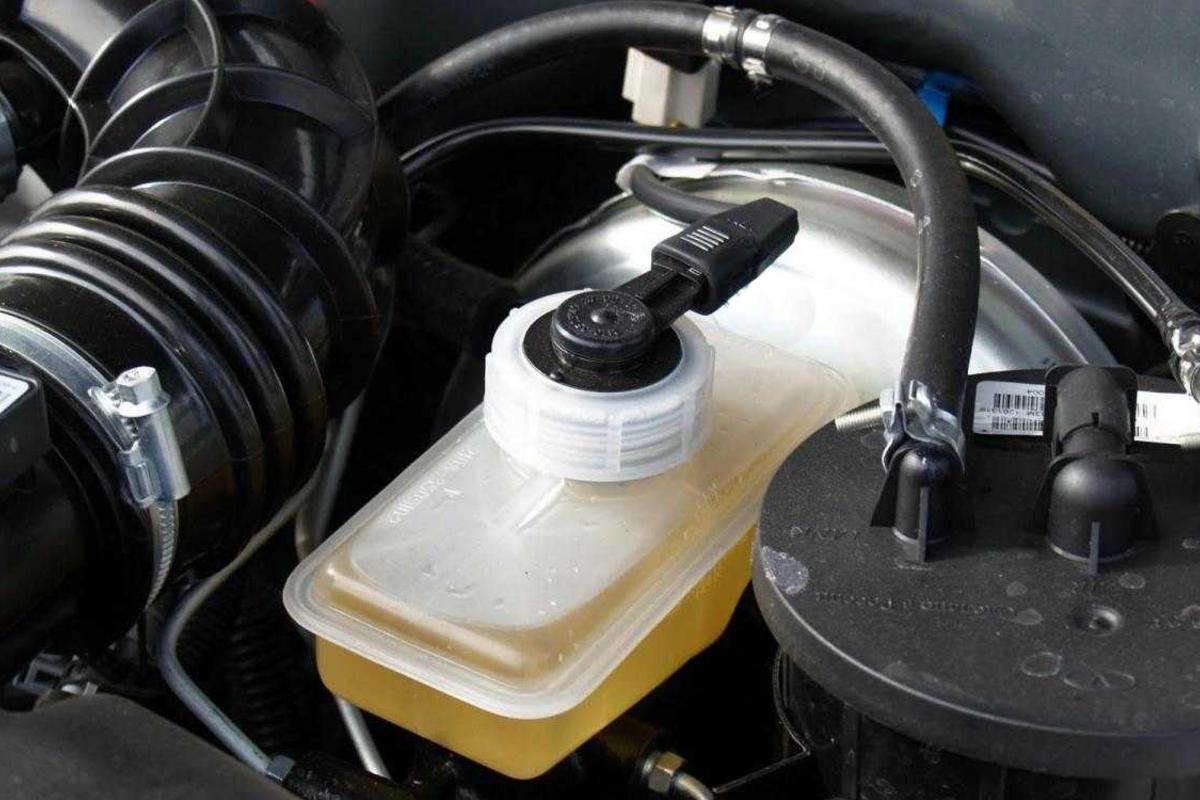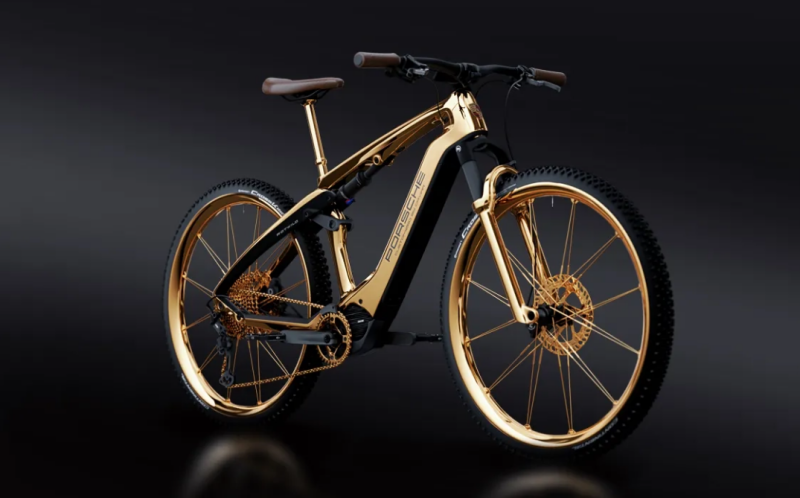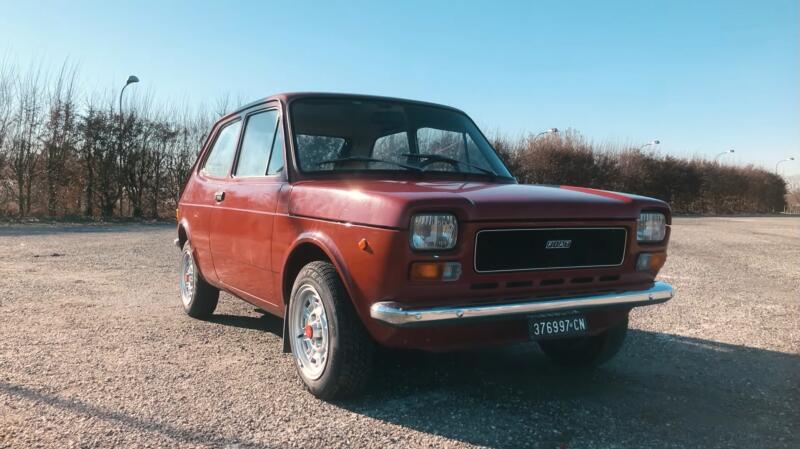How brake fluid works in the system
When you press the pedal, the piston in the master cylinder begins to move. This forces the brake fluid (TF) to move through the hoses, tubes to the wheels. Here it enters the working cylinders and acts on the pistons located in them. They press the pads against the surface of the drums or discs. The resulting friction causes the wheels to spin more slowly, to the point of stopping.
The hydraulic system uses the property of the fluid not to compress and keep the volume constant. It would seem that theoretically you can use anything: water, oil or alcohol. But in reality, there are specific requirements for TJ:
During the operation of the brake pads, a strong heating of the parts occurs, and therefore the fluid used must have a high boiling point
When the machine is not moving, the TJ does not heat up, but at negative temperatures it is not allowed to freeze (like water) or lose fluidity (like oil)
TJ cannot be aggressive in a chemical sense: otherwise it will corrode all rubber seals
Modern brake fluid is a mixture of basic substances and a variety of additives that ensure the performance of the system in a wide variety of conditions.
Why change TJ
The main problem is its hygroscopicity. Brake fluid absorbs moisture from the outside through the slightest gaps between the cylinders and pistons, the expansion tank vents. When its amount exceeds 3%, the efficiency will begin to fall. The second point is the ingress of air into the system. It can turn into steam when the liquid is heated. As soon as the TJ boils, its volume will increase, all the excess will go into the expansion tank. After cooling, the steam will turn into water and "dilute" the "brake". As a result, corrosion of the metal parts of the system.
Oil and alcohol formulations
The first is chemically neutral (does not corrode rubber parts) and well lubricates the rubbing surfaces of parts. Alcohol is "responsible" for resistance to low temperatures. In general, the product is not hygroscopic and can stay in the system for 10 years or more without replacement. But there is a serious minus - the boiling point, which exceeds the same indicator for water by 10-15 ° C. 70 years ago, this would have been enough. But today, other speeds and capacities: the brakes of modern cars heat up faster and stronger, so it is dangerous to use such compounds in them. Of the "classic" representatives of oil-alcohol mixtures, it is worth mentioning BSK, which is still produced today. It is still used in rare cars and buses.
Glycol formulations
Today, the most common variant of TJ. It was designed specifically to increase the boiling point. Based on polyethylene glycol plus polyesters of boric acid. Such a "chemical" solution made it possible to increase the boiling point to 190-260 °C. The compositions do not thicken in frost and have good lubricating properties.
But there are enough shortcomings, and the main one is toxicity. Glycol can easily corrode body paint. Therefore, for the brake system, rubber seals are made from a material that is particularly resistant to the chemical environment. And the second "sore" is the high hygroscopicity of glycol compounds. That is why modern TJs based on them need to be changed every 3-5 years. It is worth considering some types of liquids produced today.
"Neva" and "Tom"
Both products "originate" from the USSR, but are still produced, albeit in small quantities. The first TJ is produced by the Nizhny Novgorod association "TOSOL-Sintez" and is a mixture of glycols with additives. The scope of use is not wide: vehicles that do not develop high speeds, in which the brakes are heated weakly. Characteristics:
- ? boiling point of the new composition -195 С°
- ? by the end of the service life -138 С°
- ? service life - 2 years (if moisture content is not less than 3,5%)
"Tom" - an improved version of the "Neva", which introduced heat stabilizers. That is, the new liquid boils at +220 C °, by the end of its service life (approximately 2 years) - at +155 C °. The composition fully complies with the international standard DOT 3. "Tom" is poisonous, it has a light yellow color.
"Dew"
First, it is appropriate to mention what DOT is. This is the Department of Transportation from the United States (Department of Transport), which developed standards for TJ, which were accepted around the world. The abbreviation is followed by a number indicating the “generation” of the product. The first and second are practically not used today, only the third (rarely) fourth and fifth.
"Rosa" is produced on the basis of boron-containing polyester, plus additives against corrosion and oxidation. On sale you can find two types: "Rosa 3" (complies with the DOT 3 standard) and "Rosa 4" (DOT 4). Today, the last option is most in demand, suitable for use in cars equipped with ABS, ESP. Characteristics of "Rosa 4":
- ? boiling point of fresh liquid - 260 ° C
- ? at the end of the service life - 165 С°
- ? service life - 3 years
DOT 3 is not suitable for use in vehicles with ABS, ESP systems.
DOT 4
Advanced state-of-the-art formulations incorporating extreme pressure additives. Limit characteristics:
- ? the boiling point of the new TJ is 260 ° C
- ? by the end of the service life - 180 С°
- ? operational resource - up to 3 years
The fluid can be used on most modern cars, including sports cars with powerful power plants and overall brake discs.

ROSDOT 4, 0,91 l. Price 430 rubles. Photo: YandexMarket
Silicone compounds
They are made on the basis of silicon organic compounds. These liquids do not absorb moisture at all, the viscosity does not change depending on the temperature, the operating range of which is from -100 C ° to +350 C °! But there is a "fly in the ointment"; the composition has poor lubricity. It cannot be used in vehicles with ABS, where the module valves will quickly fail. Therefore, the scope of DOT 5 is specific: partly racing cars in which there are no electronic safety systems and the fight against overheating of the brakes comes first. Silicone compounds have virtually no end-of-life.
But do not confuse TJ DOT 5.1 with the liquid described above! This is a glycol composition used along with DOT 4. Its characteristics have been improved: the boiling point for the new composition is +230 C °, by the end of service it is +180 C °. So that the buyer does not get confused, special designations are reproduced on the packages. For DOT 5 - Silicon Based Brake Fluids or SBBF for short, DOT 5 - non silicon based brake fluids (NSBBF), i.e. without silicone.
Self-changing brake fluid
It is not necessary to go to a car service to carry out this operation. You can do everything yourself if you have an assistant:
- ? Open the lid of the tank with TJ, insert a funnel and add liquid. This is done so that the composition does not come out during the pumping process.
- ? completely and no air entered the system
- ? Prepare a transparent hose (suitable for a dropper) and a cup, a brake wrench
- ? Jack up the car and remove the wheel. Bleeding order: rear right, left, front right, then left

Unscrewing the bleed screw. Photo: YouTube.com
On the caliper, find the bleeder fitting and put a hose on it, lower the other end into a glass. Ask an assistant to sit in the salon. After you unscrew the fitting, you must actively press the brake pedal several times, leaving it in the depressed position. Liquid with air bubbles will come out of the tube. Repeat the operation until they are gone. The procedure must be carried out with each wheel. At the same time, do not allow the level of TJ in the tank to fall below the minimum.
Conclusions
Select brake fluid according to your vehicle make and driving style. The best option in terms of price / quality is glycol formulations. And it is not permissible to mix TJ made on a different basis.














